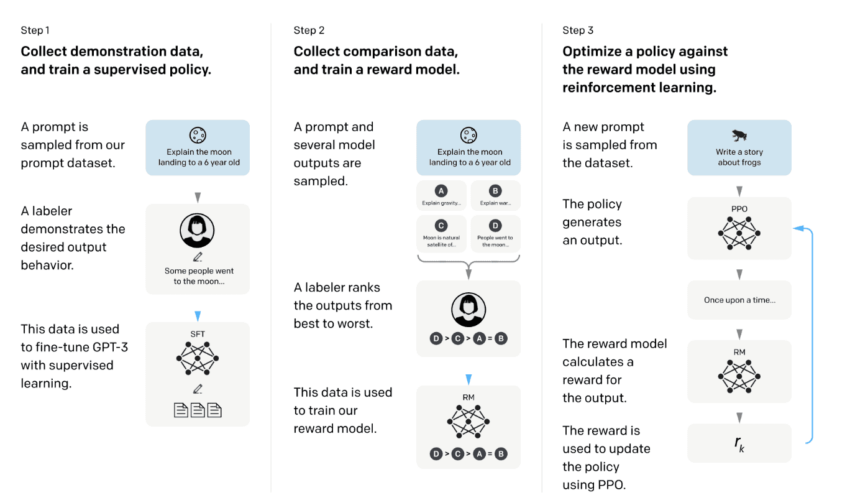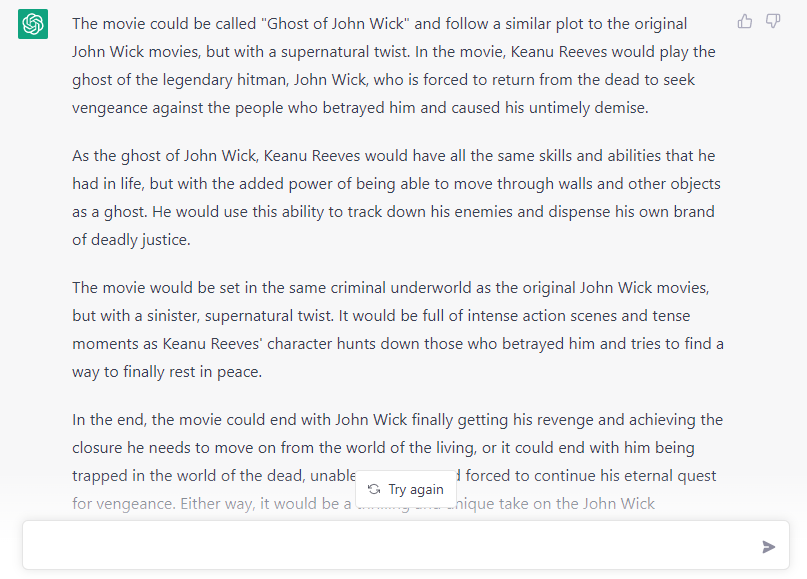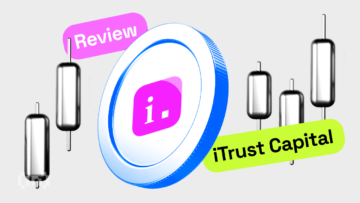What is ChatGPT really? A breakthrough AI technology with far-reaching impact, or hype that will slowly dissipate as initial curiosity fades? This detailed ChatGPT review gives you a 360-degree view of the underlying technology powering ChatGPT and its use cases.
Some call it the prelude to a new frontier in the evolution of technology. Some call it a glimmer of how artificial intelligence (AI) will change everything. Not to mention all those memes which suggest ChatGPT is an existential threat to Google and other search engines. So, what to think? This ChatGPT review will consider whether the AI program is a game-changer or just a fleeting trend. Let’s take a look.
Update: ChatGPT, built atop the family of GPT-3 models, has evolved. It now has a new family of models — GPT-4 — powering its capabilities. The Generative Pre-Trained Transformer 4 (GPT-4) came into existence on March 14, 2023. For now, developers will be able to access the APIs, and ChatGPT Plus users can experience this upgrade. More on this throughout this ChatGPT review.
Do you know that ChatGPT chat can give crypto trading signals?
Get notified of the most profitable deals and trends in the cryptocurrency market straight to your mobile phone. Never miss out on a profitable trade with our signals!
Sign up to StormGain and connect to FREE Signals from ChatGPT today!
In this review:
What is ChatGPT?

Speculations have been rife about ChatGPT ever since the prototype’s public release on Nov. 30, 2022. The excitement surrounding the project was significant: it took five days to reach the million-user mark, according to Greg Brockman, CEO and co-founder of OpenAI. Expect to learn more about it throughout this detailed ChatGPT review.
Put simply, ChatGPT is a chatbot that can engage you in a conversation, just like a human would. It has been designed to understand your questions on various topics and provide detailed responses to those questions. The responses may not always be accurate, but the bot does a relatively good job of making it feel like you’re talking to a real person.
ChatGPT is a natural language processing (NLP) machine learning model. It uses Generative Pre-trained Transformer 3 (GPT-3), currently even GPT-4, one of the most sophisticated autoregressive language models, to produce human-like text. The screenshot below shows an example conversation between a user and the software:

ChatGPT has been optimized for contextual conversation using Reinforcement Learning with Human Feedback (RLHF). This method relies on human demonstrations to nudge machine learning models toward the desired behavior. During training, the model learned from vast amounts of data from the internet. The bulk of the data was authored by humans, including conversations. This explains how ChatGPT is capable of providing human-like responses, regardless of the conversation topic. The bot seems to be able to adapt within a conversation thread.
For ChatGPT, the world hasn’t moved on since 2021
The chatbot can only provide general information and assistance based on its training and programming in its current version. The knowledge cutoff for ChatGPT is 2021, meaning it does not know about any events or developments after that time.

The chatbot is programmed to maximize the similarity between its outputs and the relevant datasets it was trained on. It has no internal mechanism to fact-check its outputs. So, its responses to your questions may sometimes be inaccurate or misleading.
This detailed ChatGPT review will delve into these specifics. But before that, let’s have a quick look at the company behind the AI chatbot.
Who created ChatGPT?
OpenAI, an AI research company based in San Francisco, is behind ChatGPT. Launched in 2015, OpenAI pitches itself as a state-of-the-art company dedicated to researching AI technology and various associated subdomains to benefit humanity.
OpenAI was co-founded by Elon Musk and Sam Altman, among others. Altman, an American entrepreneur, investor, programmer, and blogger, is also the CEO of the company. Musk resigned from the board in 2018, although he continues to contribute financially.
OpenAI has many high-profile donors and investors, including Microsoft, which invested $1 billion in the company in 2019. In fact, the partnership with Microsoft seems to have already entered the next phase. Microsoft recently confirmed that its new product Team Premium, an upgraded collaboration and communication platform, comes integrated with ChatGPT. There are also reports that the software giant is planning to add ChatGPT’s chatbot technology to PowerPoint, Outlook, Word, and its entire product suite.
As per recent Reuters reporting, the company is privately projecting $1 billion in revenue by 2024. It was recently valued at $20 billion, although OpenAI has remained tight-lipped about its financials in public.
A quick history lesson in GPTs: from GPT to GPT 4
With OpenAI releasing a new and improved model to power the search requirements of its ambitious and era-defining ChatGPT — GPT-4 — it makes sense to take a look at GPT history. For the unversed, GPT versions stand for the models powering OpenAI’s ChatGPT.
GPT-1 showed up in 2018, whereas GPT-2 came to be in 2019, focusing on 117 million and 1.5 billion parameters, respectively. Yet, the actual AI resource, ChatGPT, came around a lot later — Nov. 30, 2022 — in an official capacity. Prior to that, GPT-3 was in motion by 2020.
Many people do not know that in January 2022, a safer version of GPT-3 — GPT-3.5 or InstructGPT — arrived on the scene. While the data sets for which InstructGPT was trained were the same as that of GPT-3, there was some fine-tuning involved.
/Related
More Articles
And as of March 14, 2023, OpenAI released another model upgrade, GPT-4 — a sizeable improvement over the GPT-3.5.

While this article focuses on the more vanilla version of ChatGPT, GPT-4 brings a lot to the table. New features include multi-modal (image-capable) inputs and the ability to work with more data, multi-lingual capabilities, improved response accuracy, and more. Here is a tweet thread that captures everything related to GPT-4:
ChatGPT review: usability

Using the chatbot is straightforward. Rather than covering the individual steps, this review focuses on the bots’ merits, limitations, and overall usability.
User interface and user experience
The user interface is simple and intuitive. It has minimal design elements and just a few buttons/options — nothing to confuse even the rookie technology user. In addition to the chat box, where you type in messages and receive replies, there is one button each for:
- Starting a new conversation with the AI
- Toggling between light and dark modes
- Logging out
- Accessing the ChatGPT FAQ page and Discord server

Interacting with the chatbot is also simple. You can type in a question or a message (see the yellow arrow in the picture above). Then ChatGPT considers the questions and the relevant context before determining an appropriate response. Based on our experience testing the product so far, the chatbot takes a few seconds to respond (usually not more than 10 seconds).
Yet, in addition to reading this ChatGPT review, we will also urge you to try the interface in person. You will be amazed.
ChatGPT fees
ChatGPT is free to all registered users and the only criterion is that you have to be legally an adult (18 or older).
Additionally, OpenAI also launched a paid subscription plan called ChatGPT Plus on Feb. 1, 2023. The paid plan will be initially available to only U.S. users, and it will cost $20 per month. However, OpenAI has confirmed that it will gradually expand the service to additional countries and regions.
The company said in a blog post, “ChatGPT Plus is available to customers in the United States, and we will begin the process of inviting people from our waitlist over the coming weeks.”
ChatGPT Plus brings you the following perks over regular features:
- Uninterrupted access to ChatGPT, even during peak hours.
- Faster response time.
- ChatGPT Plus users receive priority access to new features and upgrades.
- ChatGPT Plus users can also experience GPT-4 powered responses.
What can you do with the AI chatbot?

You can use ChatGPT in many ways if you keep the bot’s limitations in mind. So far, users have been exploring ChatGBT as a tool with which to compose music, understand complex topics, make jokes, write fiction, and even write/debug computer codes. Here are a few examples of what you can do with ChatGPT:
Write and debug code
Whether you are a seasoned programmer or just a beginner, you can ask ChatGPT to help you write code to solve a particular problem. You just have to specify what programming language you want to write the code in — for example, Python, C++, or any other language. The AI software has limitations here, though. Users still have to check the code line by line and potentially debug it. So, it’s debatable whether the chatbot actually saves any time or effort here.

Even if you don’t want help writing your code, you could still ask ChatGPT to help debug your code and spot vulnerabilities. The bot will also explain how to fix those vulnerabilities. However, as mentioned above, we’d be hesitant to trust ChatGBT to write and debug its own code.
Explain concepts
ChatGPT also comes in handy for learning about a variety of topics from different disciplines. Science, history, linguistics, math, engineering — you name it. Want to learn how to fix a leaking pipe? Ask the AI chatbot for step-by-step instructions. Intrigued about what happens when two black holes collide? ChatGPT is just one question away. You can even ask the bot to help you with homework or assignments.

Brainstorm creative ideas
Need ideas for a new acoustic ballad? Ask ChatGPT to chip in with some cool chord progressions. Need a twist for a short story or a movie script? Ask ChatGPT and see whether you can build from one of its many ideas. Do be aware of lifting ideas straight from the AI bot, though: it doesn’t screen for plagiarism.
We asked the bot to suggest plot ideas for a horror movie where Keanu Reeves plays the ghost of John Wick. This is the result:

Excerpt data from texts
The bot can also help you extract data from huge volumes of text. All you have to do is feed the bot text and tell it what kind of data you are looking for (and in what format).
In the example below, we fed the AI chatbot a sizable Wikipedia article on the Battle of Saraigat (1671) and asked it to extract important details from the article and prepare a summary. The chatbot did a decent job crunching all the information to highlight the key points about the historic event.

Automate customer support
Businesses already deploy chatbots to boost their customer support infrastructure. However, ChatGPT is more sophisticated than the average chatbot. As such, it may be able to help businesses deliver improved customer support experiences.
ChatGPT review: limitations

Is ChatGBT ushering in a new era — a fresh stage in the evolution of AI? Perhaps it is a catalyst of sorts, but it’s important to remember that ChatGPT has its fair share of shortcomings. The most glaringly obvious is that the AI bot makes up facts. On the surface, this doesn’t appear malicious or intentional. Rather, it’s more of a folly that all generative large language models (LLMs) share. Some critics call it “stochastic parroting,” while others prefer the more simplistic term “hallucination” to describe this limitation.
So, what’s causing LLMs, including ChatGPT, to disperse false information occasionally? Simply put, these models are trained to predict the next words for a given input within a particular context. The models receive no training to analyze their outputs’ factual accuracy objectively. However, as observers have pointed out, what makes ChatGPT unique is its superior ability to make even those hallucinations sound plausible. This is clearly a red flag, as it could make the chatbot a useful tool in the dissemination of fake news and misinformation.
Also, the ChatGPT system is not infallible. While it does a good job of responding to most queries, it can sometimes be stumped by questions that deviate from the norm. That’s mostly because algorithms can’t always anticipate the kind of questions humans might ask. This means that ChatGPT may often fail to provide an answer to an unusual query.
Besides that, using AI models like ChatGPT to generate content may often result in output that falls short of expectations. AI-generated content is often highly organized and backed by clear logic — even if the content is full of factual inaccuracies and doesn’t provide any particularly useful insight.
And if you look closer, ChatGPT’s AI-generated content is often very verbose and doesn’t include any idioms or metaphors. All of these factors combine to make it relatively easy to detect that the content was not written by a person, but by a machine.
OpenAI acknowledges ChatGBT’s shortcomings
In all fairness, OpenAI is pointedly transparent about what ChatGPT can and cannot do. The company’s CEO has acknowledged the chatbot’s limitations. In a recent tweet, Altman cautioned users, explaining, “it’s a mistake to be relying on it [ChatGPT] for anything important right now.”
With these limitations in mind, it’s clear ChatGPT is not yet ready to replace Google and other search engines. As a learning tool, it can be both useful and fun. However, you should not yet use ChatGBT as your single source of information. Because of these inaccuracies, some websites have banned users from sharing ChatGPT responses. One notable example to have taken such a measure is Stack Overflow. The Q&A site for coders and programmers banned the use of ChatGPT-generated text shortly after the chatbot’s launch. The website justified the move, saying:
“Overall, because the average rate of getting correct answers from ChatGPT is too low, the posting of answers created by ChatGPT is substantially harmful to the site and to users who are asking or looking for correct answers.”
ChatGPT review: privacy
We recommend that all users read through OpenAI’s privacy policy and terms of use before using ChatGPT. OpenAI may review all conversations you have with the AI chatbot. The company says these reviews are important to ensure safety and compliance with relevant laws and regulations. Furthermore, the conversations also help the company improve its systems. ChatGBT is free at the point of use. Remember the saying, “if something is free, then you’re the product?” Well, that might well be the case here, especially as some estimates expect the program to cost OpenAI up to $100,000 per day to run, or $3 million a month.
With that in mind, you shouldn’t share any sensitive information with the bot, as it may be visible to the company’s AI trainers. You may choose to delete your account and all associated data at any point by following the steps outlined here. However, you can not view your conversation history, and neither can you delete specific prompts.
ChatGPT review: final verdict
Overall, this ChatGPTreview can conclude that the AI chatbot is a promising new product with some serious potential. Of course, it is still a work in progress, even with GPT-4 in play, and has much to prove with the latter releases. Yet it’s already one, if not the most, advanced multi-utility AI chatbots around. The fact that one version is still free and easy to use further adds to ChatGPT’s charm. The chatbot is useful for borrowing and building on ideas.
As mentioned, there are currently severe limitations around using the bot as a learning tool or a primary source of information, as the bot can fetch inaccurate info. Verifying the chatbot’s information with reliable secondary sources is vital. Will ChatGBT change the world as it is today? No. But will future iterations of this high-powered bot be key disruptors of the future? We’d say there’s certainly a strong possibility.
Frequently asked questions
What is ChatGPT used for?
Is ChatGPT free?
Who owns ChatGPT?
Who is the founder of OpenAI?
How does GPT work?
Can ChatGPT be integrated into custom applications?
Can ChatGPT review code?
Can ChatGPT review legal contracts?
Trusted
Disclaimer
In line with the Trust Project guidelines, the educational content on this website is offered in good faith and for general information purposes only. BeInCrypto prioritizes providing high-quality information, taking the time to research and create informative content for readers. While partners may reward the company with commissions for placements in articles, these commissions do not influence the unbiased, honest, and helpful content creation process. Any action taken by the reader based on this information is strictly at their own risk. Please note that our Terms and Conditions, Privacy Policy, and Disclaimers have been updated.









